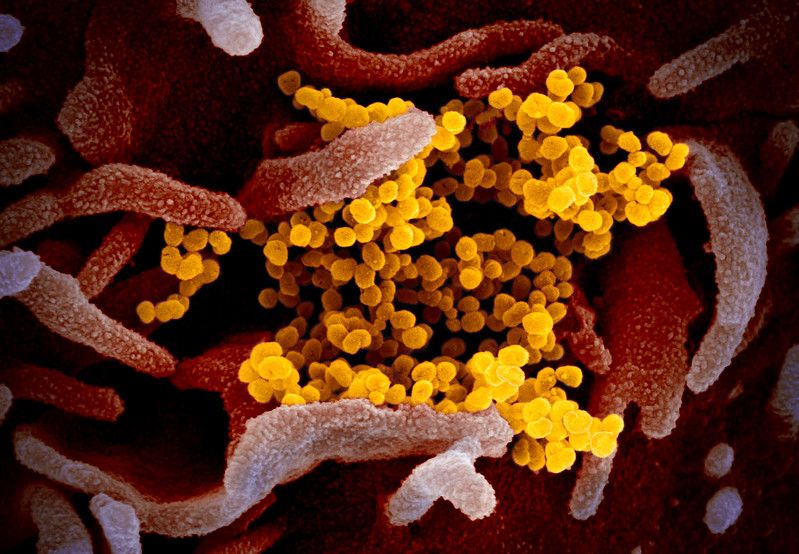科普 | 新冠病毒可以在表面存活多久?
How long can the new coronavirus last on surfaces?
By Yasemin Saplakoglu - Staff Writer
Some coronaviruses can linger on surfaces for up to 9 days.
 (Image: © NIAID-RML)
(Image: © NIAID-RML)
China's central bank is taking steps to deep clean and even destroy its cash out of fears that the new coronavirus can survive on the surface of money and potentially spread, according to CNN.
But how long can the new coronavirus linger on surfaces, anyway? The short answer is, we don't know. But if this new coronavirus resembles other human coronaviruses, such as its "cousins" that cause SARS and MERS, it can stay on surfaces — such as metal, glass or plastic — for as long as nine days, according to a new study. (In comparison, flu viruses can last on surfaces for only about 48 hours.)
In the new study, researchers analyzed several dozen previously published papers on human coronaviruses (other than the new coronavirus) to get a better idea of how long they can survive outside of the body. The authors found that these coronaviruses can linger on surfaces for over a week but that some of them don't remain active for as long at temperatures higher than 86 degrees Fahrenheit (30 degrees Celsius). The authors also found that these coronaviruses can be effectively wiped away by household disinfectants.
For example, disinfectants with 62-71% ethanol, 0.5% hydrogen peroxide or 0.1% sodium hypochlorite (bleach) can "efficiently" inactivate coronaviruses within a minute, according to the study. "We expect a similar effect against the 2019-nCoV," the researchers wrote, referring to the new coronavirus. But even though the new coronavirus is a similar strain to the SARS coronavirus, it's not clear if it will behave the same.
It's also not clear how frequently hands become contaminated with coronaviruses after touching a sick patient or contaminated surface, according to the study. The World Health Organization recommends alcohol-based hand rubs for decontamination of the hands, the authors wrote.
It's possible that a person can be infected with the virus by touching a contaminated surface or object, "then touching their own mouth, nose, or possibly their eyes," according to the Centers for Disease Control and Prevention (CDC). "But this is not thought to be the main way the virus spreads."
Rather, the virus is most likely to spread from person to person through close contact and respiratory droplets from coughs and sneezes that can land on a nearby person's mouth or nose, according to the CDC.
The study was published on Feb. 6 in The Journal of Hospital Infection.